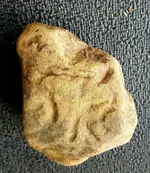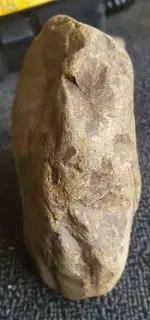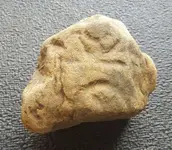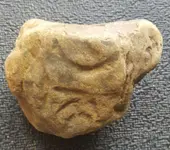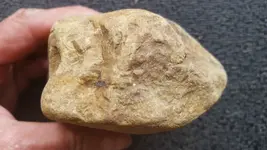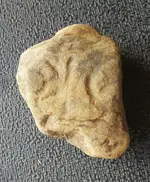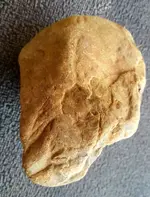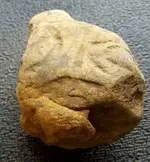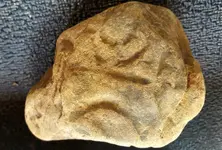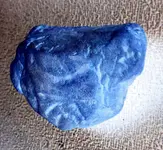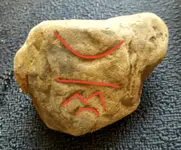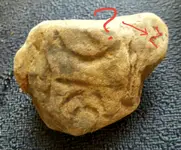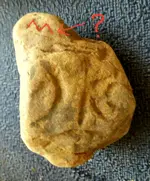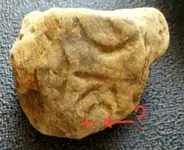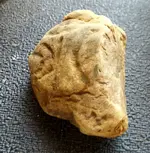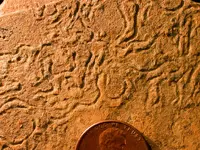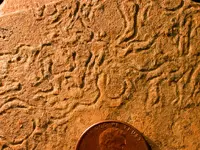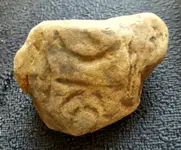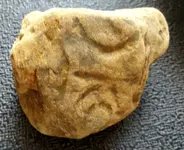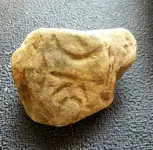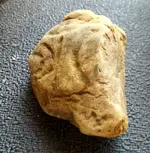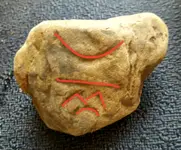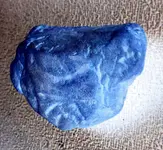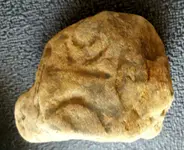Sedimentary geologist and invertebrate paleontologist here. Although ichnofossils (trace fossils) are not my specialty (I work with foraminifera and diatoms) my masters thesis advisor is a world renowned, incredibly well published trace fossil expert. I picked up quite a bit of his knowledge as a TA for his invertebrate courses at the university.
In my opinion, the markings/grooves on the sandstone look to be trace fossils, worm burrows specifically. The OP stated that there was no way they could be worm burrow because the sandstone sample is "hard stone". Trace fossils are preserved in sedimentary rocks, typically sandstones and mudstones. The sediment is soft when the organisms live within it. However, during event deposits (underwater landslides, etc), sufficient material can be deposited over the top of these soft sediments causing a number of things to occur. First, compaction of the soft sediment from the weight of the overburden; second, dewatering of the soft sediment; and lastly, this is occurring in an anoxic environment, essentially entombing these soft bodied creatures in an environment that leads to extremely slow decomposition, thus preserving the void spaces in which they lived.
To say that there is no way they are worm burrows because it is a 'hard stone' is ludicrous. How else would trace fossils be preserved? Why do we find the vast majority of mollusk, benthic foraminifera and many other aquatic fossils in solid rock? Why? Because the sediment composing that rock was soft when those organisms lived within it.
Of course, there is always the possibility that it's a fossilized chicken nugget from the late Miocene.
Is this a treasure map also?
View attachment 1361629

